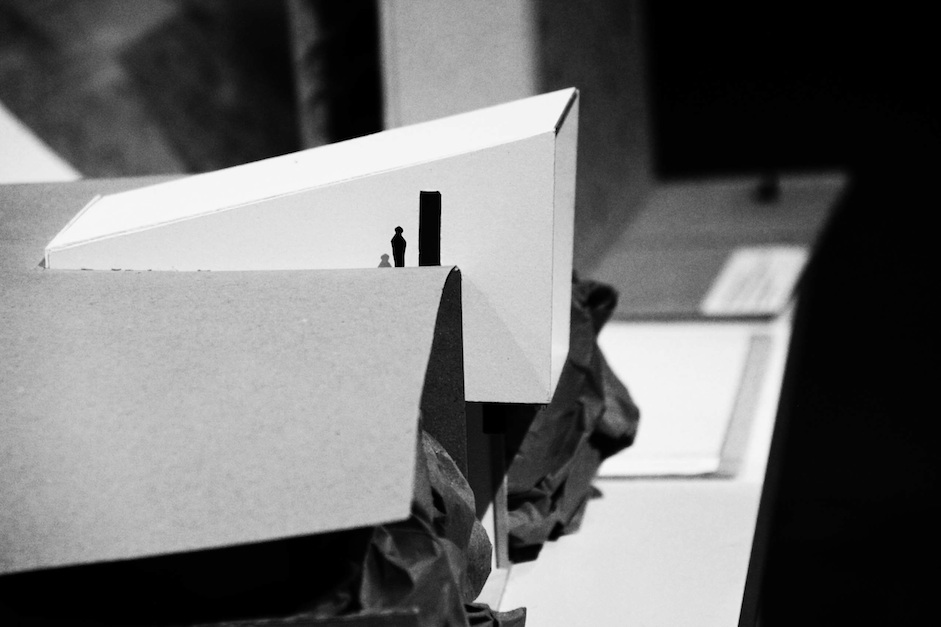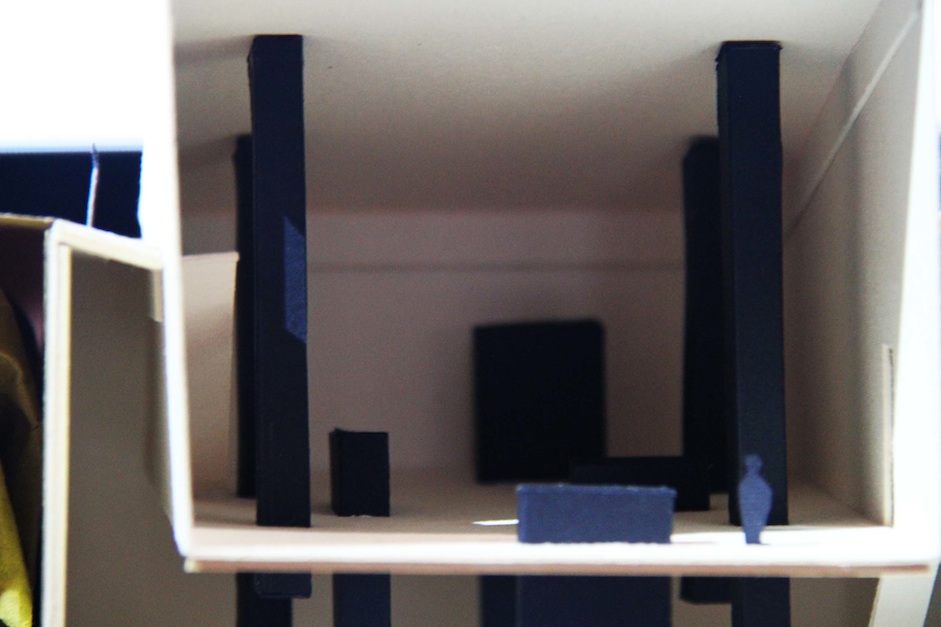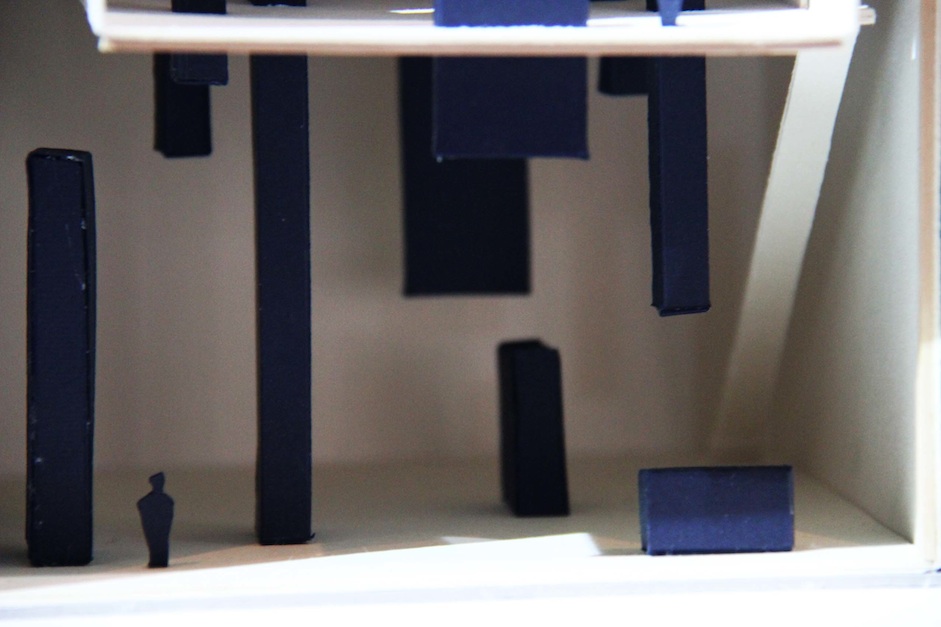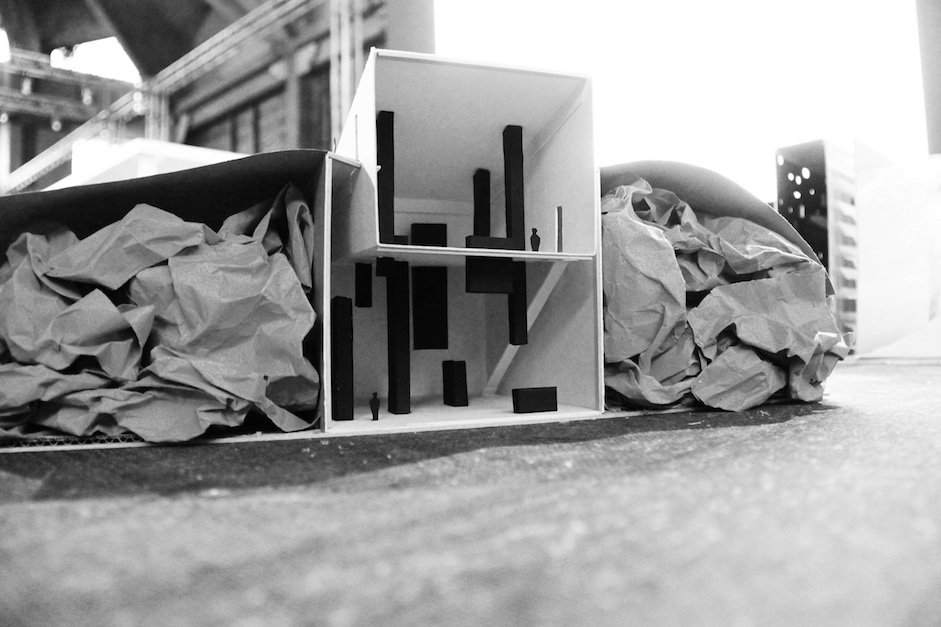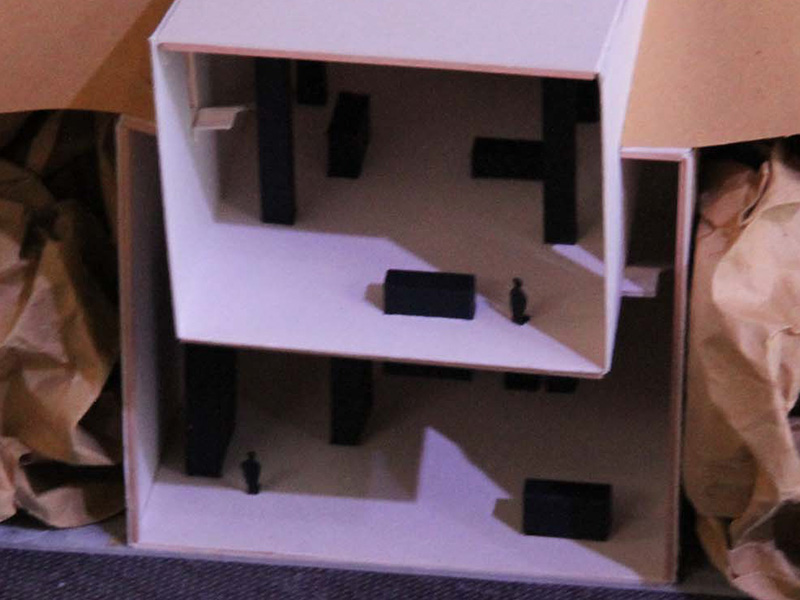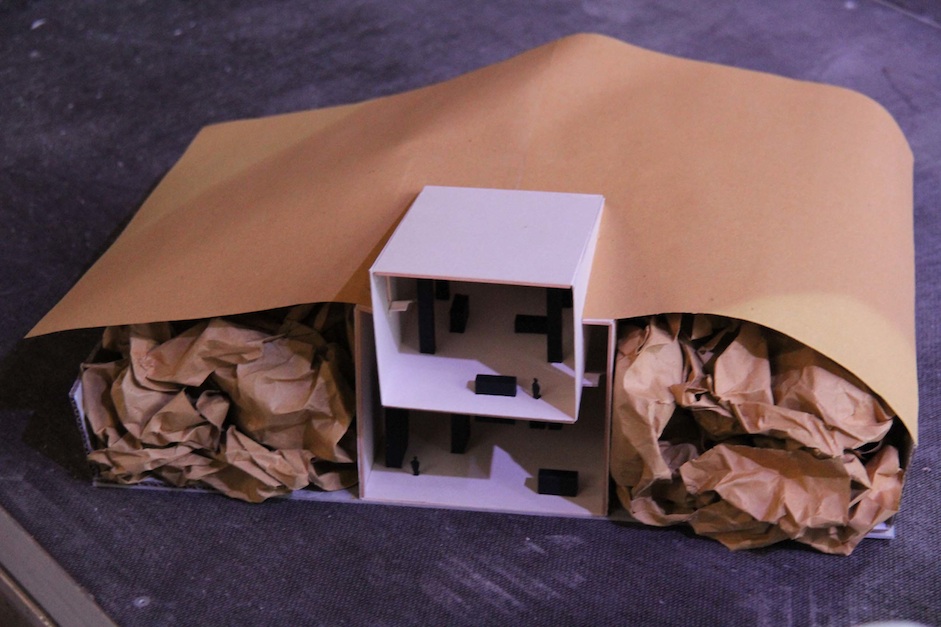The Harvest
by Amy Hempel
Project by Andrea Bruno, Stefania Eusebietti, Vincenzo Latronico
“[A] sense of uncertainty is … at the heart of Hempel’s text. A traditional short story – detailed, exciting, sad, ironic – abruptly turns into a backdoor. One can see the ‘making-of’ the story, discovering the reasons for every omission and falsehood: the writer’s insecurities toward the efficacy of a detail, the fear of being misunderstood, the need to awe the reader.
… A building on top of a rock — a belvedere on a cliff or a mountain observatory. …The space appears fluid and readable … The floor plan is rectangular; the smaller side on the right is a glass wall that opens up onto the landscape. [It] appears to be controlled in all its details. As you walk along the ramp on the left, you clearly see the rhythm of the four columns. A few concrete rectangular elements emerge from the floor. … The overall impression is of wholeness.
Underneath the entrance is another door. … The space to which it leads […] also has a glass wall; it too contains geometric concrete elements that are identical to the ones upstairs. As you walk down the ramp, you realize that the first space […] was suspended above this one; and that all that you had thought to be clear, was in fact a misunderstanding, or a lie. The columns that seemed to be supporting the upstairs ceiling, actually pass through the floor and into the space below but do not touch the ground, thus revealing themselves as cosmetic and not structural elements. Whereas, one of the elements that looks like a bench is nothing but the top of the only bearing element that supports the first space.
… There are no more doors in the large [lower] room, but it is easy to think that this downward process—the discovery of deeper and larger levels, the overturning of structural expectations—can go on forever. There is no catharsis to this disillusion. In spite of the beautiful view, we cannot trust those columns.”
Turin Architecture Festival

